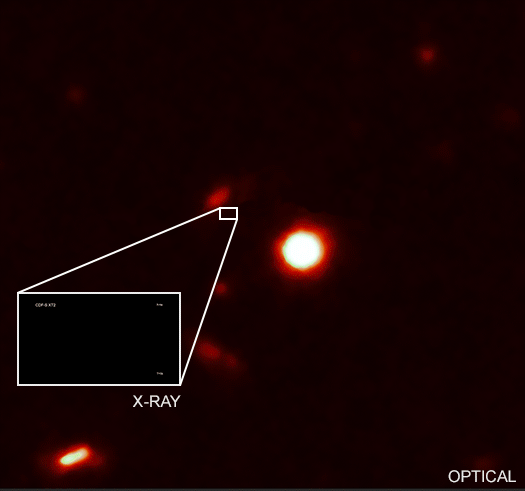- A neutron star merger without an observed gamma-ray burst has been discovered using NASA’s Chandra X-ray Observatory.
- This result gives astronomers another way to track down neutron star mergers as well new information about their interiors.
- This source, called XT2, is located in the Chandra Deep Field-South, the deepest X-ray image ever obtained.
- By studying how XT2 changed in X-ray brightness, astronomers were able to identify it as two neutron stars that merged into a larger one.
These images show the location of an event, discovered by NASA’s Chandra X-ray Observatory, that likely signals the merger of two neutron stars. A bright burst of X-rays in this source, dubbed XT2, could give astronomers fresh insight into how neutron stars — dense stellar objects packed mainly with neutrons — are built.
XT2 is located in a galaxy about 6.6 billion light years from Earth. The source is located in the Chandra Deep Field South (CDF-S), a small patch of sky in the Fornax constellation. The CDF-S is the deepest X-ray image ever taken, containing almost 12 weeks of Chandra observing time. The wider field of view shows an optical image from the Hubble Space Telescope of a portion of the CDF-S field, while the inset shows a Chandra image focusing only on XT2. The location of XT2, which was not detected in optical images, is shown by the rectangle, and its host galaxy is the small, oval-shaped object located slightly to the upper left.
